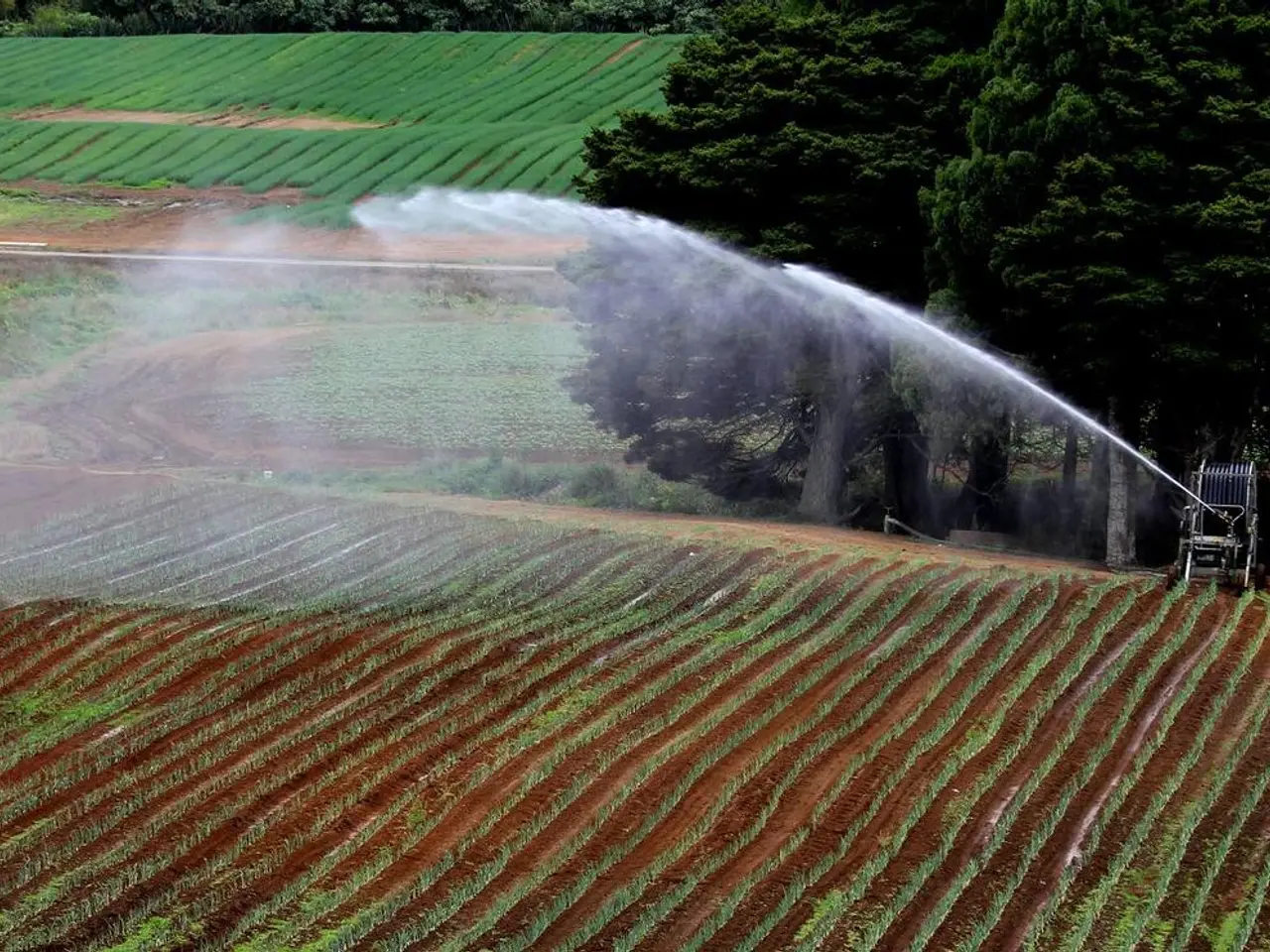Advantages of Agrarian Ecological Approaches for Small-Scale Farmers
In the world of sustainable farming, small-scale farmers are finding success through the implementation of agroecological practices. These methods not only offer cost savings but also improve soil health, increase yields, and provide a layer of economic resilience.
One of the key benefits of agroecological farming is the reduction in input costs. By lowering dependence on external markets, minimizing water usage, and reducing spending on chemicals and fertilizers, farmers can achieve significant cost savings.
A crucial aspect of agroecology is the focus on working with nature, promoting biodiversity, and sustainability. Practices such as cover cropping, crop rotation, reduced or no-till farming, organic composting, agroforestry, beneficial insect habitat creation, and legume integration are at the heart of this approach.
Cover cropping, for instance, involves planting non-cash crops (often legumes) between main crops. This not only prevents soil erosion but also improves soil organic matter and nutrient cycling, enhancing soil water retention. This low-cost practice can increase yields by 5–10%.
Crop rotation, another vital practice, involves alternating different crops seasonally to restore and maintain soil fertility, reduce pest buildup, and improve soil structure. This inexpensive method offers yield benefits of 5–12%.
Reduced or no-till farming preserves soil structure, reduces erosion, conserves moisture, and promotes soil microbial health. It also lowers labor and equipment costs, increasing sustainability.
Organic composting, using farm or organic waste to enrich soil nutrients naturally, reduces dependence on synthetic fertilizers and enhances soil carbon sequestration.
Agroforestry, the integration of trees with crops or livestock, creates biodiversity, enhances resilience to climate extremes, improves microclimates, and can open new income from tree products.
Planting wildflower strips and cover crops provides habitats for beneficial insects like pollinators and pest predators, reducing chemical input needs and improving pollination.
Integrating legumes (like clovers) in pastures naturally fertilizes soil, reducing synthetic fertilizer costs, and promoting nutrient uptake in diverse plant communities, enhancing pasture resilience.
These practices collectively help reduce input costs, improve soil carbon storage, enhance on-farm biodiversity, and often increase yield stability. They contribute to climate change mitigation by capturing carbon in soils and vegetation while enhancing farmers' adaptive capacity through diversified production systems and new market opportunities such as agroforestry products and ecological or organic labels.
Networks like Sustainable Agriculture India (SAI) or international collaborations facilitated by FAO promote participatory approaches and knowledge sharing for scaling such agroecological approaches in smallholder contexts, recognizing local innovation and context specificity as keys to success.
In summary, practices such as cover cropping, crop rotation, reduced tillage, organic composting, agroforestry, beneficial insect habitat creation, and legume integration are among the most promising agroecological practices that simultaneously improve soil health, reduce costs, open new economic avenues, and help small-scale farmers mitigate and adapt to climate change.
- Incorporating sustainability into farming systems can lead to financial benefits, as seen through initiatives like agroecological farming.
- An environmentally friendly approach to farming, agroecology, promotes biodiversity and sustainability over relying on external markets.
- The implementation of agroecology, seen in practices such as cover cropping and crop rotation, can offer cost savings while promoting soil health and yield benefits.
- A health-and-wellness focus is present in the farming community, with many small-scale farmers adopting agroecological practices to improve soil health.
- In the realm of environmental science, agroecology serves as a vital cornerstone in the development of sustainable farming practices.
- For those interested in personal-finance and investing, supporting small-scale agroecological farmers can provide sustainable returns while promoting environmental and health benefits.
- Lifestyle choices that prioritize sustainability include making allocations to food-and-drink purchases that support agroecological farming and environmentally-friendly practices.
- In the home-and-garden sector, adopting agroecological practices can be a valuable component of urban gardening, promoting biodiversity in limited spaces.
- Agroecological practices can have significant implications for the business community, as these methods open opportunities to tap into markets for agroforestry products and organic produce.
- Data-and-cloud-computing and technology can aid agroecological farmers by offering resources for tracking yields, managing resources, and improving farming practices.
- In addition to their impact on farms, agroecological practices can positively influence various aspects of life, such as relationships with nature, pets, travel, sports, and even the weather, in a more sustainable manner.




